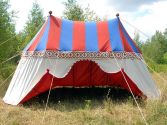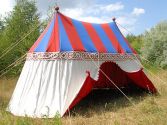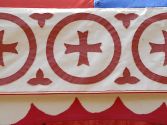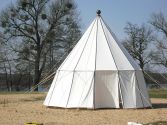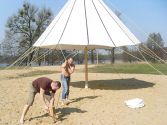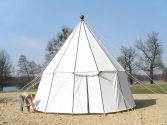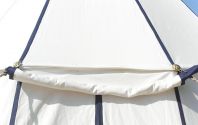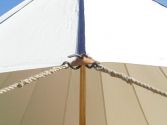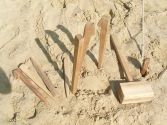A hand sewed tent, done from narrow strips of linen. It has two poles, ropes are attached to the border of roof with hammered hooks. Additional "storm" ropes reinforce tent in windy days. Walls can be separated and removed from the roof (there can stay only roof with poles). Tent equipment can contents two chandeliers, wooden or steel pegs and pins, waxed covers for the poles bases (to prevent their devastating by the wet dirt), transport bags.
The main basement for this reconstruction was the fresco of Guidoricco Da Fogliano done by Simone Martini in about 1328, preserved in internals of Palazzo Pubblico in Siena (first photo in last row below). The sewing methods, ropes attaching and material used are inspirited by the tent from Basel (see the photos in last row below). This preserved tent probably becomes from the beginning of the XVII century, but it looks almost similar to the late medieval tents from iconographic sources – we can assume, that technically tent from Basel is very close to medieval tents of this type.
Sizes:
ground level - about 3 x 5.5m,
height to the top of the roof - 3.1m,
walls height - 2m.
Price: 3800 EUR
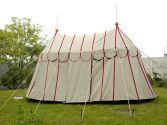


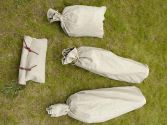
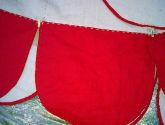
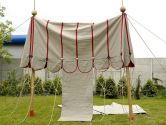
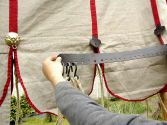

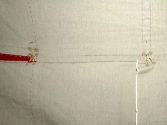
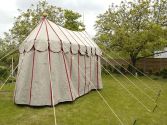
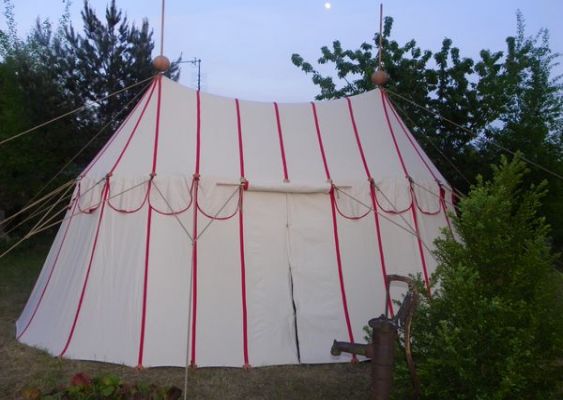
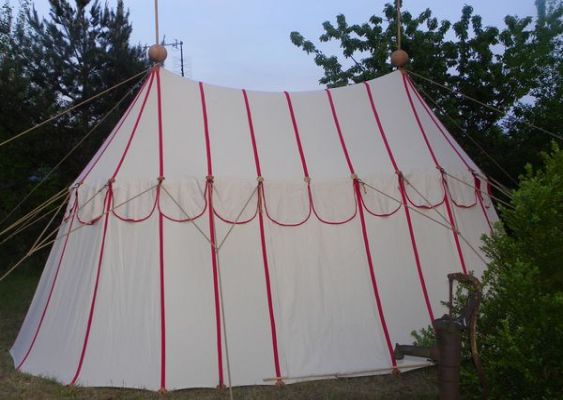
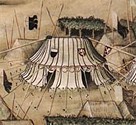


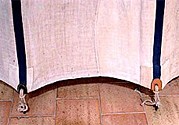
 Tents
Tents

















